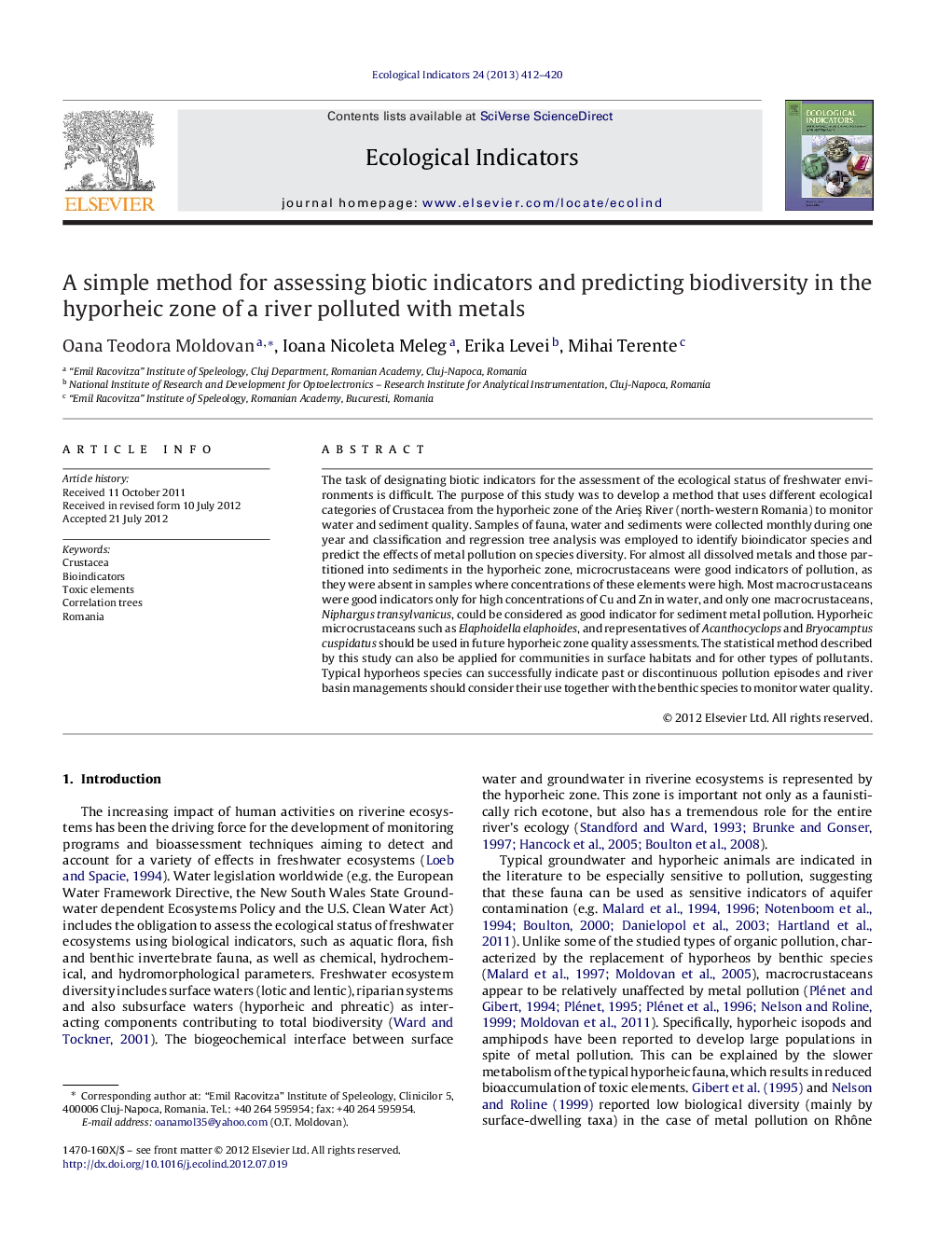| کد مقاله | کد نشریه | سال انتشار | مقاله انگلیسی | نسخه تمام متن |
|---|---|---|---|---|
| 4373661 | 1617176 | 2013 | 9 صفحه PDF | دانلود رایگان |

The task of designating biotic indicators for the assessment of the ecological status of freshwater environments is difficult. The purpose of this study was to develop a method that uses different ecological categories of Crustacea from the hyporheic zone of the Arieş River (north-western Romania) to monitor water and sediment quality. Samples of fauna, water and sediments were collected monthly during one year and classification and regression tree analysis was employed to identify bioindicator species and predict the effects of metal pollution on species diversity. For almost all dissolved metals and those partitioned into sediments in the hyporheic zone, microcrustaceans were good indicators of pollution, as they were absent in samples where concentrations of these elements were high. Most macrocrustaceans were good indicators only for high concentrations of Cu and Zn in water, and only one macrocrustaceans, Niphargus transylvanicus, could be considered as good indicator for sediment metal pollution. Hyporheic microcrustaceans such as Elaphoidella elaphoides, and representatives of Acanthocyclops and Bryocamptus cuspidatus should be used in future hyporheic zone quality assessments. The statistical method described by this study can also be applied for communities in surface habitats and for other types of pollutants. Typical hyporheos species can successfully indicate past or discontinuous pollution episodes and river basin managements should consider their use together with the benthic species to monitor water quality.
► Classification trees were employed to identify hyporheic bioindicators.
► Microcrustaceans were good indicators of pollution with metals.
► Macrocrustaceans were good indicators for high concentrations of Cu and Zn in water.
► Hyporheos can be used together with the benthic species to monitor water quality.
Journal: Ecological Indicators - Volume 24, January 2013, Pages 412–420